
Wine Culture and Information since 2002 - Volume 22
 Wine Culture and Information since 2002 - Volume 22 |
|
Issue 97, June 2011 |
Contents |
|
|
Golden Grapes, Silvery Wines |
|
I have always had a huge esteem and respect for Luigi Veronelli. By reading his books and watching to his appearances on TV I had my first constructive interest for the world of wine, an interest going beyond the simple act of pouring the wine in a glass and to drink it, common things with which you grew up in Italy. My first memories of Luigi “Gino” Veronelli, even before reading his books and what he wrote, belong to his appearances on TV in company of Ave Ninchi - the great and unforgettable Italian actress - in the TV show “A Tavola alle Sette”. At those times I was a kid, but I was however fascinated by the way Luigi Veronelli talked about cooking and wine, two subjects seeming to have no secret for him and that he was telling with simplicity and incisiveness. Nevertheless, I still remember the funny contrast to the limit of a clash - and most of the times hilarious - between Luigi Veronelli and Ave Ninchi, in their continuous “teasing each other”, sometimes ferociously, even though it was evident between the two of them there were mutual respect and esteem. I remember the day I met him - the first and only time in my life - in occasion of that renowned wine fair in Verona, Italy. It was 1999. At those times I was already into the world of enogastronomy as a consultant, I already obtained my sommelier degree, and I was going to that wine fair for six years already. Luigi Veronelli was at the stand of his publishing house and I remember my excitement when I saw him and I realized it was him. And I remember his smile, wide and bright, frank, genuine and welcoming, his eyes and his look, watchful and bright of who is never stop watching, while trying to understand, although having already understood and saw a lot. It is an undeniable fact, the heritage Luigi Veronelli left to us is huge. He was the very first to have the courage to start that indispensable process which led to the change of Italian wine, emphasizing the right dignity of the ones working in a vineyards and with their hard work make wine. Among the many anecdotes, the many things Luigi Veronelli said, I frequently remember the episode when he met René Engel, the great vintner of Nuits Saint Georges in Burgundy. Veronelli reminds that when he met him it was 1956 and he was just a young journalist with the ambition of writing about wine. René Engel was already old and he offered him a glass of his Vosne Romanée. To the astonishment of Luigi Veronelli in front of that glass - astonishment what anyone loving Burgundian wines would have had - René Engel said, with a haughty smile «See, you Italians have golden grapes and make silvery wines, we have silvery grapes and make golden wines». To this words, Luigi Veronelli thought to himself that golden grapes, in case they were properly vinified, could have certainly made shiny golden wines; silvery grapes could make, in the best case, wines looking like gold without being so. It is undeniable France and French gave so much to the world of wine. It is undeniable the French understood, before Italy and anyone else, what is wine, quality wine and the right way to exalt a vineyard, the territory and with that their golden wines - undeniably of gold - despite they are made with silvery grapes. After many years, it is legitimate to ask ourselves whether Italians have understood they have golden grapes. Apparently and in these times, around Italian wine there is a growing interest for indigenous grapes, for natural wines, using traditional techniques of past times, the rejection of chemistry and of certain technologies, concepts most of the times showed off as a presumed merit, as to support the idea this is enough to ensure a quality wine. Veronelli's observation was however right: it was enough to properly vinify our golden grapes in order to make shiny golden wines, while leaving to the French their silvery grapes, however having a well deserved and undeniable glory. Generalization, as everyone knows, is an unjust act and most of the times makes no sense to use it. If we however look at what it is happening to the world of Italian wine, it is obvious reality gives us a truly different picture of what they say in their words and in their intentions. It should however be said there are - luckily - many and praiseworthy exceptions. There are producers who have always understood this concept, or better to say, they have always known that, whereas other wished it was really like that, even though in their vineyards, in order to ensure quality and prestige, have always been found the classic and widely known French grapes. Ameliorative grapes, they used to say and keep on saying. This is not a crusade against Merlot, Cabernet Sauvignon, Syrah, Chardonnay and Sauvignon Blanc - just to mention the most known names - as it is evident with these grapes can be made wines of primary greatness, provided you work properly in the vineyard and then in the winery. The price we pay today for having massively introduced these grapes in our vineyards is the fact we cannot abandon them. Or, at least, not so quick. In the past we uprooted vineyards of local grapes in order to replace them with the miraculous and ameliorative French grapes which promised the illusion - together with barrique - to ensure a great wine with no or little efforts. Replacing these varieties today certainly is very expensive. What should we do with all of these silvery grapes planted in Italian vineyards, despite the trend is to enhance indigenous varieties, in that journey which should get - hopefully - to the production of the shiny golden wines wished by Luigi Veronelli? Every time there is a lacking of common sense, here it comes politics and its way to muddle things up. A solution which is getting more and more common in Italy, is to modify production disciplinary, or to create new ones, in order to introduce, legally - pardon, in an ameliorative way - these varieties in those wines having a long history and always produced with local grapes. There are many production disciplinary which have already been modified in the past or for which they have proposed changes of this kind and waiting for approval. The only hope is that serious producers, the most tenacious and far-sighted ones, will oppose to this shameful hypothesis, by avoiding the use of these varieties therefore allowing our golden grapes to express themselves the way the deserve. And, in particular, to state in the label of their wines, as no place in the world has an ampelographic richness equal to the one of Italy. And this is a real richness, a huge heritage we must respect. Dear Gino Veronelli, there is still a long way to go before seeing your shiny golden wines and that we all are waiting for. I am sure you knew this already. Antonello Biancalana
|
||||
The Tools of the TasterWine sensorial tasting is a task requiring the use of many tools and attitudes in order to ensure the reliability of the evaluation |
|
The scene is usual: a wine is poured in a glass and then starts an analytical process which, despite having different goals, it however aims to the goal of defining whether we like that wine or not, if it meets our taste, our expectations, our approval. It is commonly known, sensorial tasting of a wine - or any other beverage or food - has many goals, from the simple personal pleasure to the critical-analytical evaluation in order to determine its correspondence to a quality or typical model. In any case, despite of the goals, the practice of tasting requires proper tools - or supposed to be proper according to the taster or the circumstance - in order to ensure the good achievement of the goal we want. Tasting tools are generally represented by tangible and physical objects. Indeed, this activity requires the use of other “tools” as well, having nothing in common with the physical world. Tasting a wine - and the same is true for any food or beverage - does not mean to simply pour it in a glass, then observing, smelling, tasting. These acts, which certainly are fundamental, represent just a small part of the process making the sensorial evaluation of wine. The result of sensorial tasting is in fact determined by a series of factors and elements, each of them being indispensable and fundamental at the same way. The glass seems to be the main tool with which a tasting is done, of course the most important tangible tool. The shape of the glass is fundamental for the correct and proper evaluation of wine's organoleptic qualities, not only the shape, but also the material with which it was made from. Having no decorations, the glass must be transparent and colorless in order to not affect wine appearance, while allowing its proper observation, from clearness to color and its nuances. Moreover, the shape of the glass is fundamental for the perception of wine aromas - as a result of a precise geometric ratio between volume and surface of contact - as well as affecting the initial impact on taste and its development. We will not focus on the physical and mechanical qualities of a glass, as this subject was covered many times in our pages. The goal of this article is to consider the other aspects affecting sensorial tasting, in particular the ones having no connection with the “physical world”, the ones about inner attitude and specific qualities of the taster. If the glass is very important for the proper appreciation of wine, likewise it is the mood of the taster, the experience, concentration and culture, the relation of the taster with a glass of wine. Among factors associated to the physics of tasting, we should also mention the fundamental role of temperature at which a wine is being tasted. This factor - as it is commonly known - has the property of affecting the sensorial perception of a beverage or food, by accentuating or attenuating both aromas and flavors. As an examples, it is enough to remember that low temperatures attenuate the development - and therefore the perception - of aromas, as well as the perception of negative aromas and faults, whereas high temperatures tend to excessively develop alcohol volatility and, in general terms, to make the aromatic profile of the wine less elegant. Temperature strongly affects the perception of flavors. As an example, high temperatures make tannins less astringent, whereas low temperatures tend to exalt their aggressiveness and harshness. The role of temperature in sensorial tasting, just like glasses, has been covered in past issues of our magazine.
Sensorial tasting is not expressed by the accuracy and precision of tangible and physical tools. The practice of sensorial tasting, which is mainly based on the listening of stimuli caused by chemical, physiological and - last but not the least - emotional phenomena, requires tools and conditions which are mainly associated to the inner expression of the taster. Inner conditions and predisposition - something no physical tool can express - however representing an important value, maybe the one having the highest value. Among the main elements belonging to this category we certainly have respect. Respect for wine, its history, its land, its grapes, its personality and - important as well - respect for the one who made that wine, fruit of a passion, of the interpretation and a job done with commitment. It is too simple to judge with the pretension of passing an ultimate and indisputable verdict without having tried to understand first. it is too simple, as well as useless. The lack of respect, and the world of wine review is full of these cases, frequently brings to the expression of purely presumptuous opinions, to believe one has the right to demolish or exalt the job of others by simply expressing an opinion. This does mean to not respect others and, in particular, to believe one can be in the stupid position of the one thinking to be superior than others - and no one is like that - convinced his or her thought is absolute and unquestionable. The opinion of who tastes and reviews wines certainly is not absolute, it certainly is the fruit of a professional competence, but it however does not express everyone's opinion. In case a taster does not like a wine, this does not mean it is not good, it means the person who tasted it did not like it. And this is different from denigrating the job and passion of others just because it does not meet our ideas or understanding. Of course, there is the right to express opinions about a wine, but we cannot believe this will be agreed, or agreeable, by all, considered as an unquestionable and final verdict. Another fundamental factor is time. We cannot expect to judge a wine in a reliable way in few seconds or in few minutes. There are tasters who say they evaluate more than one hundred wines a day, other say to go even beyond this figure. It is supposed these tasters do many things in the course of their day - like everyone of us, after all - and if we suppose the time they dedicate to tasting is an average of ten hours a day, this means tasting ten wines per hour, a wine every six minutes, with no breaks. Can you possibly believe you can express a reliable judgment in just six minutes? In case this would be possible, we should also consider the huge impact of halo effect and of natural and physiological tiredness of senses when they are stimulated for a long time with no proper breaks. There are wines which can open up in few seconds - and sometimes they make good surprises in case one has the patience to listen them for a long time - while other wines are more shy and humble, they need more time to tell their story. With wine is never wise to be in a hurry. With wine is required the predisposition to listening, the curiosity of getting to know the one in you have in front, with its qualities and its faults. In a glass of wine you will never find a colored liquid only, result of the fermentation of grape juice. When you uncork a bottle and you pour its content in a glass, you are not just pouring some wine, you are pouring history, the tale of a whole season, of sun and rain, of efforts and hopes, the renewed relationship between man and land, between man and vine. «Wine is the song of the earth upwards the sky» said Luigi Veronelli. In these words is concentrated all the strength of wine, a beverage having a strong meaning for the history of man and his relationship with earth, his land. Also for this reason, the tasting of a wine cannot be done in few minutes, just because in a wine - the one you are having in your glass - there is more than a beverage fruit of the fermentation of grape juice. Moreover, sensorial tasting is a practice requiring commitment and concentration, conditions which can also be associated - in a certain way - to the respect we owe to wine, its territory and to the one who made it. If you taste a wine superficially, you cannot expect to know that wine - or, even worse, to express an opinion - in a reliable and concrete way. It is like believing to know someone very well after having talked or being in company of this person for just few minutes, even worse, while looking elsewhere or talking on the phone. Tasting is a total exercise completely involving a taster, it does not want superficial behavior, or even worse, a haughty attitude. You should always have a curious attitude, with the will of wishing to get to know something new, with no prejudices, while allowing the wine to tell its story from the beginning to the end. On this regard, it should be said there are wines - just like persons - showing impressive talent and quality, which can fascinate the one listening to it, which can use the right words since the beginning of the conversation, in order to positively impress the one who is listening to it. Indeed, this is just another reason for paying more attention and spending more time to the tasting of wine, in order to “force” it to talk longer, and then finding out if what it says is true or it is just a disappointing fiction. The same is true for the wines appearing as “shy”, those which do not open up in a minute and need more time in order to be “confident” and to trust the one who wants to listen to its story. Moreover, our mood strongly affects our will and predisposition to listening. This is true with persons as well as with wine. When we are in a bad mood, our predisposition to constructive listening is very compromised and therefore we should avoid tasting a wine with a critical goal or for studying. In order to become a good taster, you have to continuously taste, you have to practice a lot, with commitment, passion and concentration. There is no other way. The more you taste, the better those indispensable qualities making a remarkable difference: memory and experience. These two qualities are indispensable for understanding a wine, they allow to discern and understand real quality from false quality, or - at least - which seems to be so. You recognize a good wine as such for the fact you tasted good wines; therefore it is very important to taste bad wines as well. Of course, there is also personal taste, but objective quality can be evaluated only in case you use comparative parameters, based on past experiences. Memory, another fundamental factor, allows the comparison with wines belonging to the same territory or type in order to define their correspondence to a typicality. A smell or a taste have the power to recall to the mind situations, moments and experiences. In case of wine, this recalls to the mind other wines tasted in the past, while activating that useful process of comparison and learning. As already said, tasting a wine does not mean to just pour it in a glass and to analyze it with our senses. In a wine there is also the history of a territory, of a culture, the expression of the vine in a specific place. These factors are indivisible from wine. If you really want to understand a wine, it is fundamental to understand the territory from which it originates, just because every territory is a world on its own and to which is added the important job of man and his way to interpret that territory and its grapes. For this reason, no wine is equal to any other one, despite there are so many similar wines, not because of territory's fault, but because of fashions followed for marketing reasons. You should always remember when you are in front of a glass, you are not tasting a wine only, you are tasting a territory and the expression of a specific moment and season which, as such, are unrepeatable and unique. Just because every wine is unique and unrepeatable, you should consider this concept as one of the main tools of the taster. If you really want to understand. And understanding requires, first of all, respect.
|
||||||||||||
Wines of the Month |
|
|
|
Score legend Prices are to be considered as indicative. Prices may vary according to the country or the shop where wines are bought |
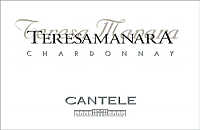
|
|
Teresa Manara Chardonnay 2009 |
|
| Cantele (Apulia, Italy) | |
| Grapes: Chardonnay | |
| Price: € 9.00 | Score: |
| Teresa Manara Chardonnay shows a pale straw yellow color and nuances of greenish yellow, very transparent. The nose denotes intense, clean, pleasing and refined aromas which start with hints of apple, banana and hazelnut followed by aromas of pear, acacia, plum, hawthorn, grapefruit and vanilla. The mouth has good correspondence to the nose, a crisp attack and however balanced by alcohol, good body, intense flavors, pleasing roundness. The finish is persistent with flavors of apple, banana and hazelnut. Teresa Manara Chardonnay ages in barrique for 8 months. | |
| Food Match: Stewed fish, Stuffed pasta, Roasted white meat, Mushroom soups | |
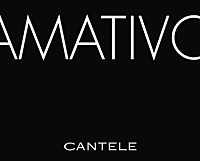
|
|
Amativo 2008 |
|
| Cantele (Apulia, Italy) | |
| Grapes: Primitivo (60%), Negroamaro (40%) | |
| Price: € 16.00 | Score: |
| Amativo shows an intense ruby red color and nuances of ruby red, little transparency. The nose reveals intense, clean, pleasing and refined aromas that start with hints of black cherry, blackberry and plum followed by aromas of violet, blueberry, tobacco, chocolate, cinnamon and menthol. The mouth has good correspondence to the nose, a tannic attack and however balanced by alcohol, good body, intense flavors, pleasing roundness. The finish is persistent with flavors of black cherry, blackberry and plum. Amativo ages in barrique for 10 months. | |
| Food Match: Roasted meat, Stewed and braised meat, Hard cheese | |
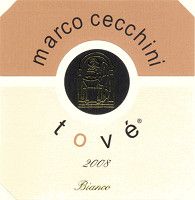
|
|
Colli Orientali del Friuli Bianco Tové 2008 |
|
| Cecchini Marco (Friuli Venezia Giulia, Italy) | |
| Grapes: Friulano, Verduzzo Friulano | |
| Price: € 12.20 | Score: |
| Colli Orientali del Friuli Bianco Tové shows a brilliant golden yellow color and nuances of golden yellow, very transparent. The nose denotes intense, clean, pleasing and refined aromas which start with hints of apple, plum and almond followed by aromas of hawthorn, honey, broom, pineapple, grapefruit, pear and mineral. The mouth has good correspondence to the nose, a crisp attack and however balanced by alcohol, good body, intense flavors, pleasing roundness. The finish is persistent with flavors of apple, plum and almond. A part of Friulano grape ferments and ages in cask. Colli Orientali del Friuli Bianco Tové ages in steel tanks. | |
| Food Match: Stuffed pasta, Broiled fish, Roasted white meat, Mushroom soups | |
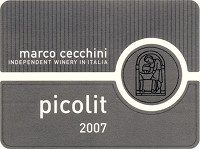
|
|
Colli Orientali del Friuli Picolit 2007 |
|
| Cecchini Marco (Friuli Venezia Giulia, Italy) | |
| Grapes: Picolit | |
| Price: € 28.00 - 500ml | Score: |
| Colli Orientali del Friuli Picolit shows a pale amber yellow color and nuances of amber yellow, transparent. The nose reveals intense, clean, pleasing, refined and elegant aromas which start with hints of raisin, honey and dried apricot followed by aromas of lavender, candied fruits, peach jam, date, almond, citrus fruit peel, lychee and nail polish. The mouth has good correspondence to the nose, a sweet and round attack, however balanced by alcohol, good body, intense flavors, pleasing crispness. The finish is persistent with flavors of died apricot, raisin and honey. Colli Orientali del Friuli Picolit ages in steel tanks. | |
| Food Match: Confectionery, Drzxuppa coadaied fruit tarts, Hard and piquant cheese | |
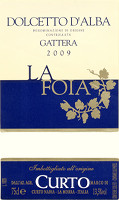
|
|
Dolcetto d'Alba Gattera La Foia 2009 |
|
| Curto Marco (Piedmont, Italy) | |
| Grapes: Dolcetto | |
| Price: € 9.00 | Score: |
| Dolcetto d'Alba Gattera La Foia shows a brilliant ruby red color and nuances of ruby red, moderate transparency. The nose denotes intense, clean, pleasing and refined aromas that start with hints of cherry, blackberry and plum followed by aromas of raspberry, blueberry, violet and cyclamen. The mouth has good correspondence to the nose, a slightly tannic attack and however balanced by alcohol, good body, intense flavors, agreeable. The finish is persistent with flavors of cherry, blackberry and plum. Dolcetto d'Alba Gattera La Foia ages in steel tanks. | |
| Food Match: Sauteed meat, Stewed meat, Stuffed pasta | |
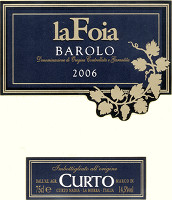
|
|
Barolo La Foia 2006 |
|
| Curto Marco (Piedmont, Italy) | |
| Grapes: Nebbiolo | |
| Price: € 27.00 | Score: |
| Barolo La Foia shows a brilliant ruby red color and nuances of garnet red, moderate transparency. The nose reveals intense, clean, pleasing and refined aromas which start with hints of cherry, plum and violet followed by aromas of raspberry, vanilla, rose, tobacco, cinnamon, pink pepper and chocolate. The mouth has good correspondence to the nose, a tannic attack and however balanced by alcohol, full body, intense flavors, pleasing crispness. The finish is persistent with flavors of cherry, plum and raspberry. Barolo La Foia ages for 2 years in cask followed by 2 years of aging in bottle. | |
| Food Match: Roasted meat, Stewed and braised meat with mushrooms, Hard cheese | |
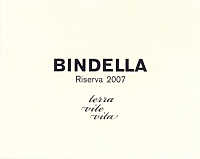
|
|
Vino Nobile di Montepulciano Riserva 2007 |
|
| Bindella (Tuscany, Italy) | |
| Grapes: Sangiovese (85%), Other Grapes (15%) | |
| Price: € 18.00 | Score: |
| Vino Nobile di Montepulciano Riserva shows a brilliant ruby red color and nuances of garnet red, moderate transparency. The nose reveals intense, clean, pleasing and refined aromas which start with hints of black cherry, plum and violet followed by aromas of blackberry, raspberry, blueberry, vanilla, tobacco, chocolate, cinnamon and menthol. The mouth has good correspondence to the nose, a tannic attack and however balanced by alcohol, full body, intense flavors, pleasing roundness. The finish is persistent with flavors of black cherry, plum and blackberry. Vino Nobile di Montepulciano Riserva ages for 24 months in cask followed by 12 months of aging in bottle. | |
| Food Match: Game, Roasted meat, Stewed and braised meat, Hard cheese | |

|
|
Vin Santo di Montepulciano Dolce Sinfonia 2006 |
|
| Bindella (Tuscany, Italy) | |
| Grapes: Trebbiano Toscano (80%), Malvasia Bianca (20%) | |
| Price: € 25.00 - 375ml | Score: |
| Vin Santo di Montepulciano Dolce Sinfonia shows a deep amber yellow color and nuances of amber yellow, moderate transparency. The nose reveals intense, clean, pleasing, refined and elegant aromas which start with hints of dried fig, raisin and almond followed by aromas of date, apricot jam, quince jam, caramel, vanilla, honey, citrus fruit peel, tobacco and nail polish. The mouth has good correspondence to the nose, a sweet and round attack, however balanced by alcohol, good body, intense flavors, pleasing crispness. The finish is persistent with flavors of dried fig, raisin and honey. Vin Santo di Montepulciano Dolce Sinfonia ages in caratelli (small barrels) for 3 years followed by 12 months of aging in bottle. | |
| Food Match: Confectionery, Dried fruit tarts, Piquant cheese | |
News |
|
In this section are published news and information about events concerning the world of wine and food. Whoever is interested in publishing this kind of information can send us a mail to our address.
|
AquavitaeReview of Grappa, Distillates and Brandy |
|
|
| Distillates are rated according to DiWineTaste's evaluation method. Please see score legend in the "Wines of the Month" section. |
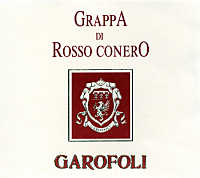
|
|
Grappa di Rosso Conero |
|
| Garofoli (Marches, Italy) | |
| (Distiller: Distilleria F.lli Rovero) | |
| Raw matter: Pomace of Montepulciano | |
| Price: € 23.50 - 70cl | Score: |
| Grappa di Rosso Conero shows a brilliant golden yellow color, transparent and crystalline. The nose denotes intense, clean, pleasing and refined aromas of praline, blackberry, tobacco, vanilla, violet, plum, dried fig and black cherry, with almost imperceptible alcohol pungency. In the mouth has intense flavors with perceptible alcohol pungency which tends to dissolve rapidly, pleasing roundness, good correspondence to the nose, balanced sweetness, agreeable. The finish is persistent with flavors of praline, blackberry and black cherry. Grappa di Rosso Conero is distilled in a batch bainmarie alembic still and ages in cask for 18 months. Alcohol 43%. | |
Wine Parade |
|
|
| The best 15 wines according to DiWineTaste's readers. To express your best three wines send us an E-mail or fill in the form available at our WEB site. |
| Rank | Wine, Producer | |
|---|---|---|
| 1 |
| Trento Brut Riserva Methius 2004, Dorigati (Italy) |
| 2 |
| Aglianico del Vulture Il Repertorio 2006, Cantine del Notaio (Italy) |
| 3 |
| Soave Motto Piane 2008, Fattori (Italy) |
| 4 |
| Arkezia Muffo di San Sisto 2004, Fazi Battaglia (Italy) |
| 5 |
| Brunello di Montalcino Progetto Prime Donne 2004, Donatella Cinelli Colombini (Italy) |
| 6 |
| Confini 2007, Lis Neris (Italy) |
| 7 |
| Barolo Bussia 2001, Prunotto (Italy) |
| 8 |
| Brunello di Montalcino Vigneto Manachiara 2005, Tenute Silvio Nardi (Italy) |
| 9 |
| Chianti Classico Riserva 2005, Capannelle (Italy) |
| 10 |
| Barolo Cannubi Boschis 2005, Sandrone (Italy) |
| 11 |
| Sangiovese di Romagna Superiore Riserva Thea 2005, Tre Monti (Italy) |
| 12 |
| Aglianico del Vulture La Firma 2004, Cantine del Notaio (Italy) |
| 13 |
| Rosso Conero Riserva Grosso Agontano 2007, Garofoli (Italy) |
| 14 |
| Sagrantino di Montefalco Passito 2004, Adanti (Italy) |
| 15 |
| Brunello di Montalcino 2006, Siro Pacenti (Italy) |
| |||||||
Privacy Policy | |||||||


| Copyright © 2002-2024 Antonello Biancalana, DiWineTaste - All rights reserved |
| All rights reserved under international copyright conventions. No part of this publication and of this WEB site may be
reproduced or utilized in any form or by any means, electronic or mechanical, without permission in writing from DiWineTaste. |